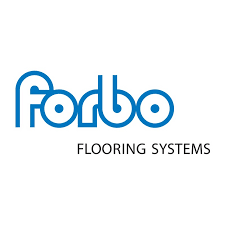
- Details
- Category: Blog
When considering an investment in advanced technology it is easy to fall prey to the siren call of individual gadgets or systems platforms but too much emphasis on the technology is a common characteristic of those who fail to deliver a return on their investment. So where do the real gains come from?
The real gains come from using the improved connectivity of advanced technology to change how people work together. A good example of how that releases new areas of added value and opportunity is the emergence of services such as Deliveroo (Other delivery services are available).
This is a service that would not be practical without an almost seamless connectivity between millions of customers and thousands of delivery riders and restaurant partners. A connectivity that makes it possible to consider, in real time, how to achieve the fastest delivery time for the eater, most accurate arrival time for the delivery person, and the most accurate food preparation estimate for the restaurant.
All of this happens in the digital domain which closes the loop between the physical and virtual worlds. That capability makes it possible to compare what did happen with what should happen (known as the Digital Twin). With the right approach, we gain an insight into the true nature of problem hot spots and how to prevent them. It also shines a light on areas of potential improvement.
For example a process company traditionally ran the first part of a batch at slow speed to minimise the potential quantity of scrap whilst awaiting confirmation from Quality Assurance. This way of working had been in place for over 10 years. When the company improved the connectivity between production processes and the measurement of electrical consumption they found that this practice doubled their energy costs during the start up period. On further investigation, they found that improvements in process control made this unnecessary. With hindsight, the availability of this savings might seem obvious but the legacy rule had been necessary in the past and was only removed by comparing what was expected with what actually happened. This closing the gap between the physical and virtual worlds.
This mirrors the experience of other organisations who have successfully applied advanced technology to Manufacturing and Process Plant operations. The real gains from advanced technology come from closing the gap between the physical and virtual worlds to change how people work together.
This is true not only to areas such as process control but also to business processes. For example, with closer connectivity across the supply chain, the complexity of individual customer order patterns can be managed more easily to reduce customer lead times and finished goods inventory levels.
What emerges from those who succeed in delivering gains from advanced technology is that those gains are achieved by using the connectivity to release hidden potential from their operations using a blend of
• Lean thinking with its focus on end to end work flow
• TPM concepts of cross functional teamwork to improve overall effectiveness
• Early equipment management (A TPM technique) stage gate processes to systematically evaluate technology options at centres of excellence before cascading the lessons learned across their organisation.
So Lean and TPM tools are as relevant to the success of digitisation as they are in the physical manufacturing world.
Of course that means revisiting accepted ways of working developed to deal with the limitations of legacy work routines which is best achieved by engaging the organisation with the transformation process as an integral part of their work routine.
To quote Paul Peng, Chairman and CEO of AU Optronics, A World Economic Forum accredited IR4.0 Lighthouse company.
"The most important achievement is the enhanced engagement and empowerment of our workforce. It has changed our way of thinking."
Not only that but improved connectivity of digitisation typically halves the time taken to achieve step up improvement gains.








